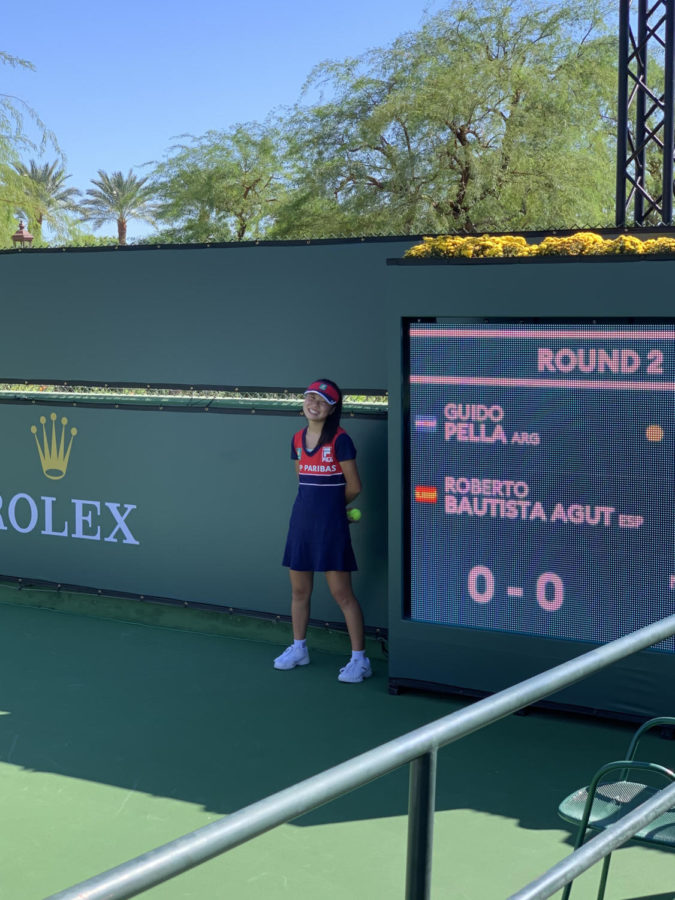Nicole Sasaki worked as a ball kid in Indian Wells tournament
An esteemed privilege in the world of tennis, ball kidding is no joke.
Nicole Sasaki, who has been playing tennis for almost six years, is on one of the doubles (two players per side) teams on the varsity tennis team who is nearing the end of their season. Her love of tennis is what led to her discovery and pursuit of this opportunity.
“I saw it on TV,” Sasaki said. “I saw the ball kids, and I always kind of joked with my family, like, how cool it would be if I was the person running to get balls?”
Though it began as a joke, Sasaki would soon find out that it could become reality.
“In 2017, I attended the Indian Wells BNP Paribas Open, a tennis tournament in Palm Springs. It’s not officially a grand slam like Wimbledon, but it is considered the ‘fifth’ slam. I saw the kids walking around in their uniforms and thought, that is so cool,” Sasaki explained. Thus, she decided to apply.
As a ball girl, Sasaki retrieves balls that hit the net during serves or rallies so that they don’t obstruct the player’s next moves. To become a ball girl or boy, teens in a specific age group have to fill out an application form to be considered. If accepted, they go through multiple training sessions to learn how to be professional and effective during matches.
Sasaki applied to be a ball girl late in 2019 and was accepted and trained in early 2020.
“The first game I was supposed to ball girl for actually ended up being the very first match to be canceled because of COVID-19,” Sasaki said.
Sasaki was crushed to have come so close and then have to wait out a time with little-to-no professional sports at all. Despite all these challenges, Sasaki is glad that she made the choice to try and become a ball girl, and this year, she’s doing it all again.
“It’s harder than it seems,” Sasaki said. “One match I was at, it was 100 degrees out.”
As the match is in progress, ball girls and boys have to work in full uniform in intense heat and maintain professional appearances.
“There’s this thing called happy cactus and sad cactus,” Sasaki said regarding the position ball girls or boys must hold when preparing to give a tennis ball to a player. “Happy cactus is holding your arms at a 90 degree angle and sad cactus is when your hands droop. We’re all forced to have happy cactus arms all the time.”
Additionally, due to the pandemic, there are fewer volunteers and thus more work for each individual, which leads to more soreness, especially in the ankles and back.
Also, they’re not allowed to talk to the professionals whose matches they work in. This method is what the trainers call “silent but appreciated,” Sasaki said.
After applying for the program and being accepted again, she went to multiple matches and had great success.
“One of my favorite parts was making new friends, some from out of state who are also in the program,” Sasaki said. “And my old friends told me they even saw me on TV.”



